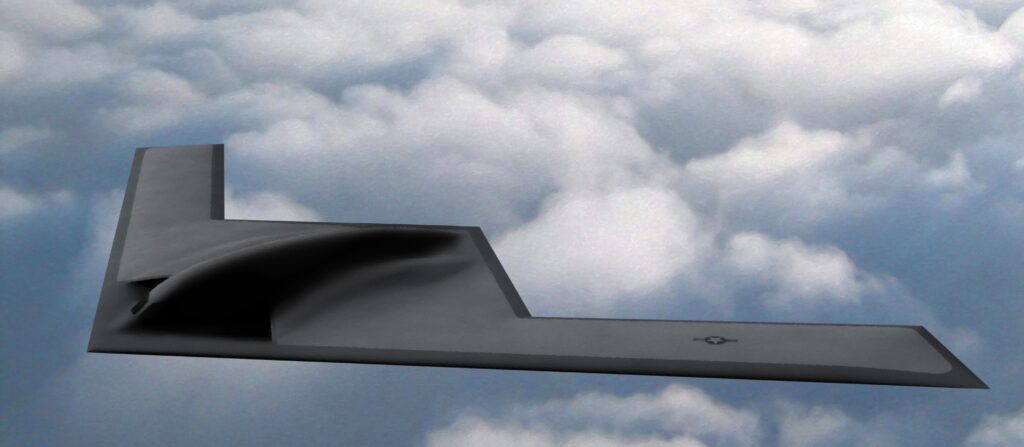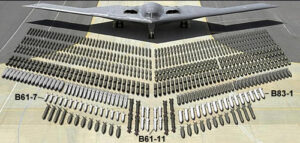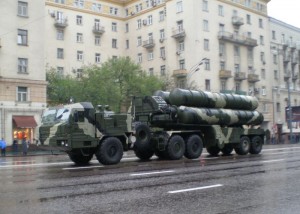Boost The US Bomber Force: Dollars vs. Operational Needs
Posted on

B-21 Raider artist rendering
The United States Air Force should consider shifting its balance of its strike forces from fighters to long-range bombers.
At the end of the Cold War, the Air Force’s combat aircraft inventory included 411 bombers. Today, it has a total of 158 B-1, B-52, and B-2 bombers, of which only 96 are designated as Primary Mission Aircraft Inventory assigned to operational squadrons to support wartime missions. Early termination of the B-2 program in the late 1990s marked the beginning of a multi-decade break in DoD’s procurement of long-range, penetrating bombers.
Air Force Secretary Heather Wilson and Chief of Staff David Goldfein warned last month that: “the Air Force as currently constituted is too small to do what the nation expects of it.” They cited the fact that their fighter force is far smaller than the one prepared to fight Operation Desert Storm in 1991. While size does matter, it is also important to remember that post-Cold War bomber retirements and early termination of the B-2 stealth bomber program has resulted in a force that is now out of balance. The Air Force’s “combat air force,” as it is called, now primarily consists of short-range aircraft and has a limited capability to penetrate advanced enemy defenses.

Mark Gunzinger
Although the Pentagon continued to develop stealth technologies after the B-2 was cancelled, it deferred funding for a next-generation bomber in favor of developing new fighters and upgrading its existing fighter force until recently. These decisions were based in part on the assumption that short-range, small-payload fighters would remain the predominant means to conduct airstrikes in future conflicts. The Pentagon assumed its fighters could support a high tempo of operations from airbases close to an enemy’s territory. Because of those choices, the United State’s bomber force is now the smallest that it has ever operated, has an unprecedented average age of more than 42 years, and includes only 20 B-2s — less than 13 percent of the bomber force — that are capable of penetrating high threat areas.

B-2 with B-61 nuclear bomb and other weapons
Continuing to rely almost exclusively on fighters operating from airbases that can now be attacked by large salvos of missiles launched by China, Russia, Iran, and others could greatly reduce the capacity and tempo — and effectiveness — of future U.S. air campaigns. Although shifting to airbases located out of the range of most of an enemy’s missiles could lessen that threat, operating from more distant bases also would decrease the number of sorties that deployed air forces could launch per day.
This suggests it would make sense to rely more on using bombers for the bulk of airstrikes in the future, rather than fighter aircraft that have about one-fifth the unrefueled range and one-tenth the payload of a typical bomber. Staging U.S. airstrikes from more distant areas could also decrease the density and increase the cost of an enemy’s airbase attacks, since it would force him to resort to using larger and more expensive long-range weapons to reach U.S. forces.

Russian S-400 surface to air missile system
Changing how U.S. air forces operate to offset enemy salvos and other A2/AD threats would also result in changes to the number and mix of combat aircraft needed for strike operations.
This might be one reason why the Air Force believes that its current bomber force is now “insufficient to meet [DoD’s] Defense Planning Guidance and nuclear guidance while sustaining current operational demand.” Procuring at least 100 new B-21 stealth bombers as currently planned will increase DoD’s capacity for long-range strikes into contested areas. To help defray the cost of this and other programs, however, the Air Force may propose retiring its 76 B-1s and 20 B-2s as B-21s begin to join the active inventory. This would result in a total force of about 100 new B-21s and 75 60-year-old B-52Hs to meet the nation’s future long-range strike needs.
A decision to retire B-1s and B-2s decades before they reach the end of their service lives would be puzzling, considering the shortage of long-range strike capabilities that exists today and will likely increase given the growing threat to U.S. airbases. Furthermore, it is likely the requirement for B-21 bombers may be much higher than 100 aircraft. This is worth further study, considering that the analyses that led to this acquisition objective would have occurred six or seven years ago and may have been based on conflict scenarios that did not consider a resurging Russia, maturing A2/AD threats, and the proliferation of guided weapons that threaten U.S. airbases. In summary, it is highly likely that a decision to retire B-1s and B-2s — if it comes to pass — would occur simply because the Air Force doesn’t have enough money to meet its modernization needs.
That would be further evidence that dollars, not the National Defense Strategy and capabilities needed to operate in the more dangerous environs of the 21st century, continue to drive the Pentagon’s investment decisions. It should be the other way around.
Mark Gunzinger, former deputy assistant Defense Secretary for forces transformation and resources, is a senior fellow at the Center for Strategic and Budgetary Assessments.
Subscribe to our newsletter
Promotions, new products and sales. Directly to your inbox.
